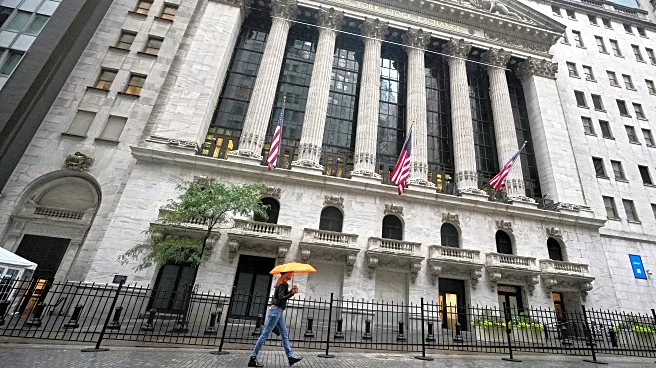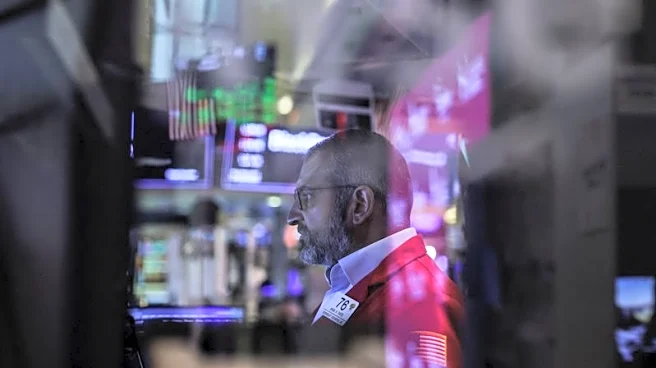What's Happening?
Northern Dynasty Minerals, Ltd. experienced a significant drop in its stock price, which gapped down before trading on Friday. The stock, previously closing at $2.24, opened at $1.96 and last traded at $2.06,
with a trading volume of 12,767,421 shares. Despite this drop, HC Wainwright has increased its target price for the company from $1.30 to $2.50, maintaining a 'buy' rating. The company, which has a market capitalization of $1.13 billion, is involved in the exploration of mineral properties in the United States, particularly the Pebble Copper-Gold-Molybdenum-Silver-Rhenium project in Alaska.
Why It's Important?
The drop in Northern Dynasty Minerals' stock price is significant for investors and stakeholders, as it reflects market volatility and investor sentiment towards the company's prospects. The Pebble project, which is a major asset for the company, has been controversial due to environmental concerns, potentially affecting investor confidence. The stock's performance is crucial for institutional investors and hedge funds, which own a significant portion of the company. The revised target price by HC Wainwright suggests optimism about the company's future, but the current market reaction indicates uncertainty.
What's Next?
Investors and analysts will likely monitor Northern Dynasty Minerals closely to assess the impact of the stock price drop on its market performance. The company's ability to address environmental concerns and regulatory challenges related to the Pebble project will be critical in restoring investor confidence. Future updates on the project's progress and any changes in regulatory stances could influence the stock's trajectory. Stakeholders will also be watching for any strategic moves by the company to stabilize its market position.
Beyond the Headlines
The situation with Northern Dynasty Minerals highlights broader issues in the mining industry, particularly the balance between resource extraction and environmental preservation. The Pebble project has faced opposition from environmental groups, which could lead to increased scrutiny and regulatory hurdles. This case underscores the importance of sustainable practices in the industry and the potential for legal and ethical challenges that companies may face.













